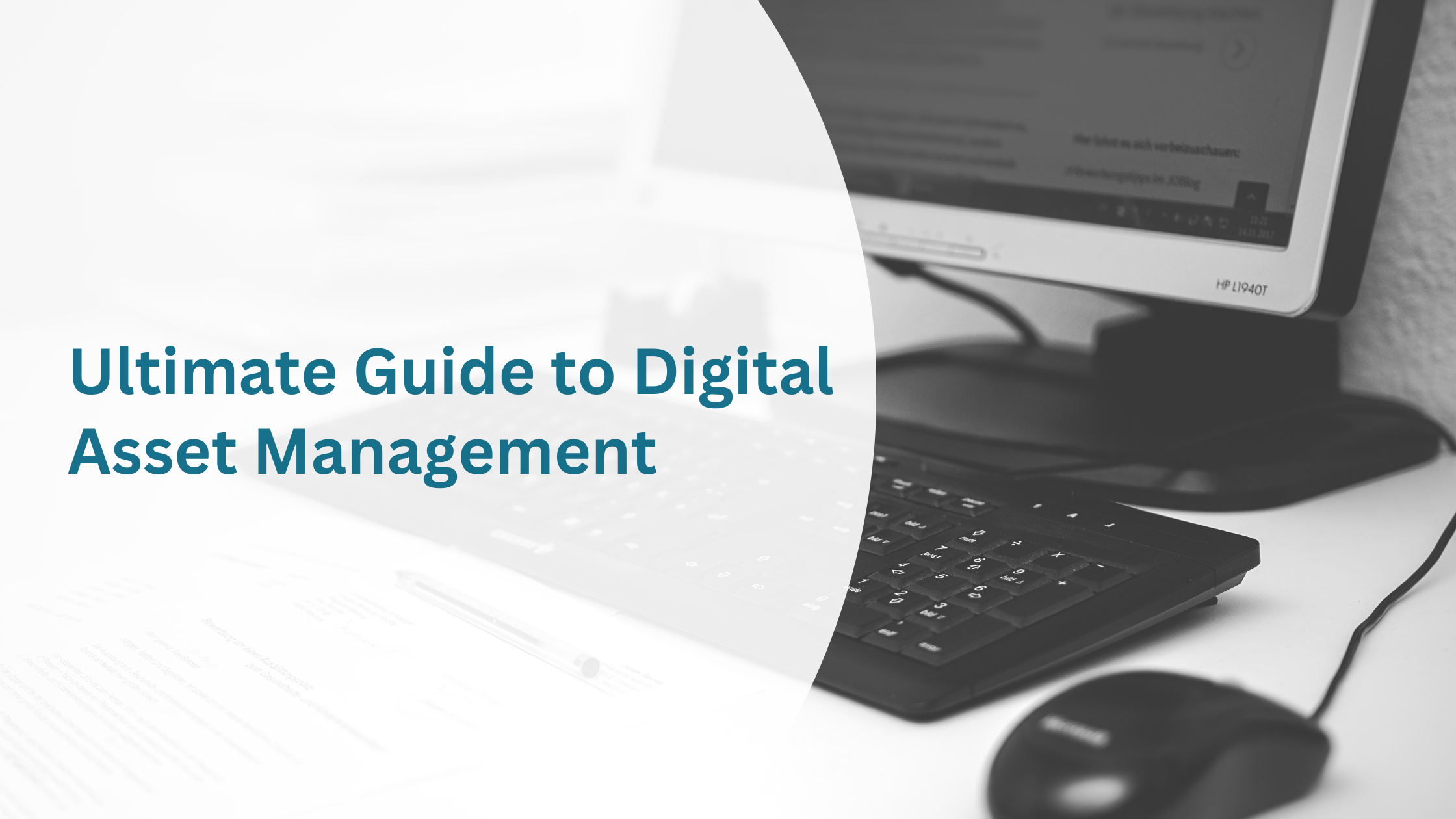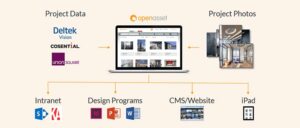AI for Enterprise AEC: Unlock Innovation in Design & Construction
Jul 10, 2025

AI is changing how enterprise AEC firms get work done. While tools like BIM and generative modeling got the conversation started, the real opportunity lies in how firms run their business day to day.
For large firms, growing content libraries, global teams, and nonstop proposals create a different level of complexity. However, AI is helping with tackling this.
In this blog, we’ll look at how enterprise AEC firms are going beyond basic AI tools and using them to improve their entire business.
The Next Phase of AI in Enterprise AEC Firms
Enterprise architecture, engineering, and construction firms face a different kind of complexity. They manage global teams, juggle massive proposal volumes, maintain large asset libraries, and navigate high-stakes client pursuits. These challenges can’t be solved with simple tools or short-term efforts. They require a smart and scalable solution.
That’s where AI comes in. AI is becoming a foundational aspect across AEC firms. It’s helping firms operate more efficiently and present a more cohesive, consistent brand. Think streamlining content reuse, improving cross-office collaboration, and accelerating proposal delivery.
This next phase of AI goes beyond simple tools and experimentation. It focuses on measurable impact.
AI in AEC: Evolving from Design to Enterprise Operations
For years, AI in AEC has been associated with design innovation. Generative design, energy modeling, and Building Information Modeling (BIM) simulations are helping architects and engineers optimize floor plans, model sustainability scenarios, and reduce rework. But that’s just scratching the surface.
Today, enterprise AEC firms are realizing that AI’s biggest value is far beyond the design phase. It’s showing up in the places that make the business run. For example:
- Marketing operations
- Proposal generation
- Content reuse
- Cross-departmental coordination
This marks a strategic shift: AI isn’t just helping teams design better buildings, it’s helping them run better businesses. It’s becoming the connective layer between people, content, and systems.
At the enterprise level, it’s about implementing AI into the firm’s operational DNA.
Where Enterprise AEC Firms Are Deploying AI Today
Here’s a look at practical ways AEC enterprise firms are using AI to solve the day-to-day challenges:
Proposal Automation: Faster, More Consistent Pursuit Responses
For enterprise AEC firms, proposals are strategic opportunities to win multi-million-dollar projects. But at scale, organizing pursuit responses across business units, offices, and subject matter experts can be difficult.
But, AI is stepping in to reduce challenges across this process. It helps teams surface the most relevant content faster, align on messaging, and produce polished responses that reflect the firm’s voice, without requiring days of manual effort.
What was once a last-minute scramble becomes a streamlined, repeatable process powered by proposal automation.
Firm-Wide Knowledge Management: Surfacing Buried Insights Across Large Orgs
Enterprise AEC firms generate enormous amounts of valuable content (project documents, RFP responses, images, etc.), but much of it gets lost. AI is changing that by helping teams unlock institutional knowledge in disconnected folders, legacy systems, and individual hard drives.
With the right structure and tools in place, AI can extract, organize, and recommend content based on context, making it dramatically easier for business development and marketing teams to find what they need, when they need it. This gives smarter access to the firm’s collective expertise.
Marketing and Content Reuse: Rediscovering Existing Assets Using AI Search and Tagging
Marketing teams at large AEC firms often juggle an overwhelming number of files, from headshots to finished project photos. AI-powered tools, like OpenAsset, help reduce workload by tagging assets, finding visual elements, and recommending the right digital assets.
This means teams can spend less time searching through folders and more time creating meaningful, brand-aligned campaigns. It also ensures that high-quality assets are used. AI makes it easier to rediscover, repurpose, and elevate the content the firm has already invested in.
Smart Content Creation: AI Assisting With Boilerplate, Visuals, and Image Recommendations
Creating content at scale doesn’t have to mean sacrificing quality. AI now supports marketing and pursuit teams by drafting boilerplate language, suggesting visuals that match proposal narratives, and even recommending layouts that align with brand guidelines.
These are intelligent starting points, helping teams move faster while still maintaining a high level of polish and professionalism. Rather than replacing creative work, AI supports it, handling the repetitive tasks so teams can focus on strategy, storytelling, and impact.
Collaboration: Aligning Distributed Offices on Brand, Message, and Visuals
Enterprise AEC firms rarely operate from a single location. Offices span regions, time zones, and business units, and each has its own team, tone, and process. AI is helping to bridge those gaps by centralizing content, aligning messaging, and providing access to brand-approved materials across teams.
AI removes friction between departments and empowers contributors across the firm to work from the same source of truth. The result is faster collaboration and stronger cohesion. This means proposals, campaigns, and client communications reflect a unified voice, regardless of where they’re created.
The Benefits of AI for Enterprise AEC Firms
AI for enterprise AEC firms empowers teams to do more with less, reuse what already works, and stay aligned no matter how complex the project or how distributed the team.
Here’s how AI is driving real impact across proposals, marketing, and internal systems:
Time Savings Across Marketing, Proposals, and Operations
Time is the most limited resource across any large AEC firm. AI helps teams reclaim it by handling time-consuming tasks like asset tagging, proposal writing, and résumé formatting. What used to take hours can now be done in minutes.
Across marketing, business development, and operations, AI speeds up everyday workflows so teams focus on what matters most: strategy, storytelling, and winning work.
Consistent Messaging and Brand Control Across Locations
For multi-office firms, staying on-brand can be a challenge. AI helps enforce consistency by standardizing messaging, tone, and asset use across teams and geographies.
Instead of relying on others to interpret brand guidelines, firms can use AI to recommend approved content, flag outdated files, and ensure that every touchpoint reflects the firm’s identity. This level of control builds trust with clients and reinforces a unified presence in every proposal.
Better Win Rates Through Faster, More Strategic Proposals
Not only does AI help teams respond faster to RFPs, but it also improves the quality of each response. How? Finding the most relevant project examples, identifying messaging, and automating formatting and writing tasks are some ways AI helps with proposal quality.
This means marketers and pursuit teams can focus their energy on tailoring strategy and sharpening differentiators. The result is proposals that hit the mark more often.
| Hand-picked related content: Learn how AI can help with proposal writing by reading our blog on AI for Proposal Writing: Tips, Tools + 13 Ways to Win More RFPs. |
More Effective Use of Past Content and Institutional Knowledge
Across a large firm, there’s often a wealth of valuable content that goes unused. Think past proposals, boilerplate responses, and insights from previous pursuits. Fortunately, AI brings that content to the surface at the right time, in the right context.
AI turns scattered assets into a strategic advantage by recognizing patterns and connecting the dots. This allows teams to build on what’s already been done instead of starting from scratch.
Scalable Systems That Grow With the Firm
What works for a five-person team won’t work for a fifty-office firm. But AI can help.
AI helps build infrastructure that scales. This includes tagging thousands of photos, supporting multi-region workflows, or adapting permissions to different teams. As your AEC firm grows, AI systems grow with it, without overwhelming staff or losing operational control.
Key Considerations for Successful AI Adoption
Before scaling AI across your organization, here’s what to keep in mind:
Organizational Rollout and Training Across Departments
Successful AI adoption doesn’t happen in a silo. At the enterprise level, it requires a coordinated rollout that brings together marketing, business development, operations, and IT.
Empower teams to use AI confidently while addressing real challenges in their everyday work. This starts with a clear plan for onboarding and training. When teams see how AI can make their jobs easier, adoption happens naturally.
Integration With Existing Systems
No enterprise tech operates in a vacuum, and AI is no exception. For firms already using platforms like DAMs, CRMs, and project management software, AI should enhance those systems, not add complexity.
Integration is key here. When AI tools connect seamlessly to existing workflows, they improve data, content, and collaboration across the entire firm.
Data Privacy, Compliance, and Permissions at Scale
Large firms work with sensitive project information, proprietary designs, and confidential client data. Any AI implementation has to respect that reality. This means protecting data, auditing usage, and content access with clear permissions.
At scale, strong compliance is foundational to trust, especially in client-facing work.
Balancing Human Creativity With Automation
As we’ve mentioned, AI is here to support great work, not replace it. Using automation to eliminate tedious tasks, like reformatting resumes or tagging images, allows AEC marketers and BD professionals to focus on what they do best: strategy, storytelling, and connection.
The most effective AI systems are built to enhance creativity, not override it.
Governance and Version Control for Branded Content
AI can move content fast, but without governance, that speed can introduce risk. Enterprise firms need systems in place to ensure only approved assets and messaging are being used firmwide.
Version control, content approval workflows, and access restrictions all play a role in maintaining brand integrity. When done right, AI speeds up content creation and protects the consistency and professionalism that sets top firms apart.
When Not to Use AI
AI can do a lot, but it can’t do everything. For enterprise AEC firms, knowing when not to use automation is just as important as knowing when to use AI.
Final proposal reviews, client-specific messaging, and complex storytelling still require human judgment. While AI can generate boilerplate and recommend project narratives, it doesn’t understand firm culture, client preferences, or local context.
It can’t replace the thoughts of a marketer who’s worked with a project manager for years or the strategic insight of a BD lead who’s followed a client for months.
This is especially true during quality assurance. AI can suggest grammar fixes or layout tweaks, but it won’t catch subtle inconsistencies in tone or ensure an image feels right for a particular client. In these moments, the human eye and empathy still matter.
When used well, AI should free up time for those higher-value tasks. It shouldn’t be a shortcut for work that defines a firm’s voice, reputation, or relationship with a client.
| Hand-picked related content: Build smarter with our AI Do’s and Don’ts Checklist for AEC Teams. |
Real-World Scenarios: How AI Delivers Value in Practice
The following examples illustrate what AI transformation for AEC enterprise firms looks like in action.
1. A marketing operations lead needs to update a proposal under a deadline.
The client wants regional project examples and updated headshots, but half the team is out of the office. Instead of digging through multiple folders and email threads, she turns to an AI-powered search.
Within three minutes, she’s found a relevant case study, the right visual for the cover, and an executive summary draft she can tailor for this pursuit. What used to be a full-day task is now ready before lunch.
2. A business development team is preparing a global RFP response.
The BD team is representing multiple offices and disciplines, and they need to show depth of experience in a region where work has been scattered.
With AI-driven content reuse, they quickly retrieve past proposals, award submissions, and sector-specific boilerplate from across the firm. The final proposal is stronger, more strategic, and showcases expertise the team didn’t realize they had.
3. A new regional office is brought online and expected to hit the ground running.
Historically, onboarding new offices meant weeks of brand training, inconsistent templates, and missed marketing opportunities. But this time, the team is equipped with AI-enhanced workflows, branded content libraries, and permission controls that guide them to the right assets.
In their first month, they publish four case studies, contribute to two proposals, and build visibility without constant support from HQ.
The Future of AI in Enterprise AEC Firms
As adoption grows, the role of AI in AEC is changing from basic automation to strategic support. What began as a way to speed up repetitive tasks is evolving into something more transformative.
The next phase is intelligent decision-making. AI will now recommend actions:
- Choosing the project examples most likely to resonate with a client
- Identifying which proposal structure performs best in a specific market
- Suggesting ways to improve marketing content based on past wins
Enterprise firms will be able to make smarter decisions, faster, and with more confidence.
We’re also entering an era of personalization. AI will help firms tailor messages, visuals, and strategies to specific clients, sectors, and even geographies. That means more relevant outreach, stronger connections, and a higher likelihood of winning the work.
Ultimately, the firms that treat AI as a core part of their business strategy will lead the industry. They’ll be more agile, more aligned, and better positioned to compete globally. AI allows you to work smarter, and smarter firms win.
Turning AI Into a Competitive Advantage
AI isn’t just a design tool. It’s becoming the connective tissue that links people, processes, and platforms across the organization. It powers faster pursuit responses, smarter content reuse, and tighter brand control.
The firms that win in this next chapter won’t be the ones dabbling in AI—they’ll be the ones implementing it. With AI embedded into everyday workflows, enterprise teams gain a competitive edge that compounds over time: faster decisions, more aligned messaging, and the ability to adapt quickly in a fast-moving market.
OpenAsset and Shred.ai were built for this moment. Our tools are designed specifically for AEC enterprises—scalable, secure, and focused on the real challenges firms face in proposals, marketing, and content management.





